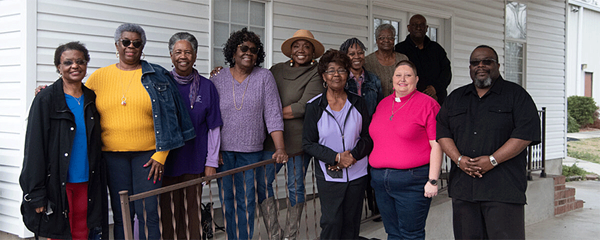Imagine a church with multiple sites, all connected. Then imagine all of these sites joining together, sharing their talents, gifts, financial resources and building space—one big church with limitless possibilities.
That’s the grand vision behind the Hartsville Cooperative Parish, and two years in, the ministry experiment is thriving, its leaders and members invigorated with the plethora of creative ways to reach and love others in the name of Jesus Christ.
“This is a laboratory, basically,” said Dr. Reginald Lee, supervising pastor of the four churches comprising the Hartsville Cooperative tive Parish: St. John UMC, Lamar; Wesley Chapel, Hartsville; New Providence UMC, Darlington; and Tabernacle UMC, Hartsville. “We’re not afraid to try new things. It’s literally taking the gloves off, learning as a parish, using all our conference resources.”
Hartsville Cooperative Parish is a part of the South Carolina Annual Conference.
The Hartsville Cooperative Parish started two years ago after former Hartsville District superintendent Dr. Robin Dease—now bishop of the North Georgia Conference—recognized several needs in her district. First was the shortage of elders to serve local churches, and second was a need to pair younger pastors with more seasoned pastors to help them grow. That, plus the fact that some of the churches in the district were struggling financially, prompted her to appoint Lee as supervising pastor.
Theirs is not a new way of doing ministry, with successful models up and down the eastern seaboard, including many in Baltimore and New York, though it’s perhaps one of the only such group in South Carolina so far. Nor is it designated only for rural or struggling churches, either.
Not only do the churches pool resources—money, gifts and people—but they also have been the grateful recipient of a number of grants from the Conference Office of Congregational Development and from the Hartsville District to help them accomplish much together. Without such support Bishop Gary Rivas and Lyttleton Street UMC, Camden their strides would not have been possible.
For example, in the beginning they started holding joint Unity Sunday gatherings where everyone took turns visiting each church. At the peak of COVID-19, they partnered with Care South and held a mobile van vaccination clinic, and held a joint vacation Bible school that drew more than 100 adults and children across the community.
“It softens the blow when it’s spread across three or four churches, and then more can be used for ministry,” Lee said.
Lee said what is especially exciting about their ministry is that it’s diverse, not only in race but in age.
And it’s working. Balthrop said at New Providence, their congregation has doubled after the pandemic dip, with people coming back not just in spurts but every single Sunday.
The others churches are seeing similar growth and excitement.
“It’s an exciting time,” Lee said
excerpt from a Jessica Brodie, editor, South Carolina United Methodist Advocate newspaper
This story represents how United Methodist local churches through their Annual Conferences are living as Vital Congregations. A vital congregation is the body of Christ making and engaging disciples for the transformation of the world. Vital congregations are shaped by and witnessed through four focus areas: calling and shaping principled Christian leaders; creating and sustaining new places for new people; ministries with poor people and communities; and abundant health for all.





